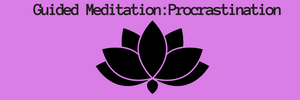 Looking at how things are alike and different helps us think critically. It allows us to analyze information about animal behavior and ecology, so we can understand and form our own ideas about how animals live and interact with their environment.
Looking at how things are alike and different helps us think critically. It allows us to analyze information about animal behavior and ecology, so we can understand and form our own ideas about how animals live and interact with their environment.
Spark your thinking!
1. Set up your language arts mini spark page #85: Compare and Contrast
2. Read this article about seals and sea lions. Write down 5 details about each animal.
3. This article outlines how the animals are different, but there are ideas in the article that suggest how they are the same as well. On your recording sheet use what you learned to make 4 sentences about seals and sea lions using these sentence starters.
1. __________ and __________ are alike because __________.
2. __________ and __________ are different because __________.
3. The most interesting difference between __________ and __________ is __________.
4. While __________ and __________ are alike because __________, they have different __________.
4. Read this article about crocodiles and alligators. Make a colorful fact sheet with 5-10 facts for each animal.
5. Create a Venn Diagram on your recording page. Record at least 5 items in each section. The far left section will have information that is only true for alligators, the far right section is only true for crocodiles, and the middle section is information that they share.

6. Share your language arts mini spark page with your teacher/EY coordinator.

 What is procrastination? According to the Merriam-Webster dictionary, procrastination means “to put off intentionally the doing of something that should be done.” Do you ever procrastinate? Sal from Khan Academy has recorded a few short meditations to help with this problem.
What is procrastination? According to the Merriam-Webster dictionary, procrastination means “to put off intentionally the doing of something that should be done.” Do you ever procrastinate? Sal from Khan Academy has recorded a few short meditations to help with this problem.

 6. Share your Science Mini Spark Mini Spark recording page with your teacher or EY Coordinator.
6. Share your Science Mini Spark Mini Spark recording page with your teacher or EY Coordinator.







 Looking at how things are alike and different helps us think critically. It allows us to analyze information about animal behavior and ecology, so we can understand and form our own ideas about how animals live and interact with their environment.
Looking at how things are alike and different helps us think critically. It allows us to analyze information about animal behavior and ecology, so we can understand and form our own ideas about how animals live and interact with their environment.


